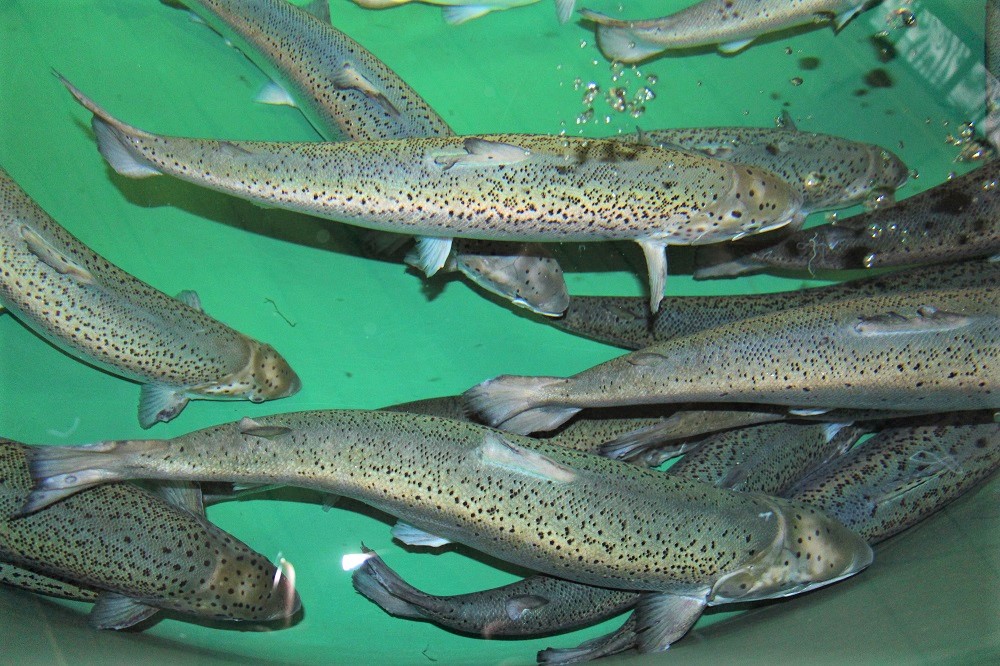
Image courtesy of the Northern Aquaculture Demonstration Facility
The fish farming industry in Wisconsin is looking to grow, and the Northern Aquaculture Demonstration Facility is designed to help that effort.
NADF is a field station of the UW System. UW-Stevens Point Prof. Chris Hartleb is the director. Located in Bayfield, the facility’s mission is to promote public education and advance the discovery, dissemination and application of knowledge for sustainable aquaculture in a northern climate.
Hartleb says one of the things they’ve been tackling for eight years now is farming walleye. He says the native Wisconsin fish is often imported for the beloved fish fry, for example.
Nationwide, Wisconsin ranks No. 11 for fish farming. It’s the No. 1 producer in the Midwest, raising rainbow trout, yellow perch, Atlantic salmon and sunfish.
Since the early 2000s, aquaculture has supported over half of the global demand for seafood. With the world’s population increasing and the high demand for seafood, aquaculture is working to meet the demand with wild caught fisheries. Consumption of fish by people has far exceeded what the wild can produce, explains Hartleb.
In terms of environmental sustainability, traditional fish farming raises fish in borrowed water and then discharging that water. That water has to be purified before it goes back to the water. Farms, such as Superior Fresh, use recirculating aquaculture which is where the water doesn’t leave the property. It goes through filters and goes back to the fish. This is the newest form of fish farming.
He says farmed fish is less expensive, more safe and are of higher quality as they meet U.S. standards.
NADF tries to play a role in building the fish farm industry. Hartleb says we need new people getting into farming. Because starting a farm is expensive, NADF tries to connect existing farms with apprentices.
But the industry is coming back from pandemic challenges. Hartleb says people were not looking to get fresh fish during the pandemic, which impacted producers. The shutdown of restaurants also hurt the industry. In terms of labor, fish farms were a great place to social distance employees. However, fish farms have a hard time competing with wages for the tight labor force.

